
All categories
Featured selections
Trade Assurance
Buyer Central
Help Center
Get the app
Become a supplier

(3252 products available)












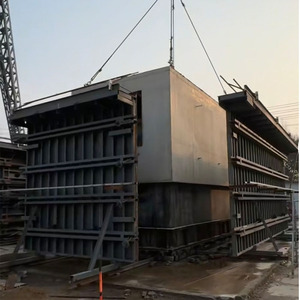

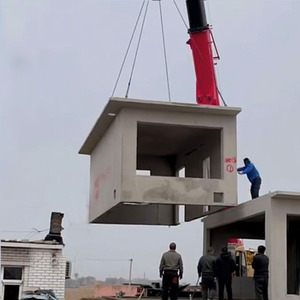











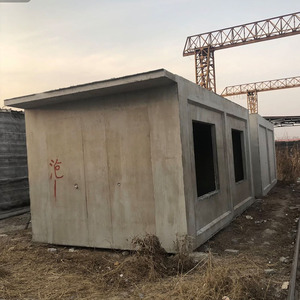



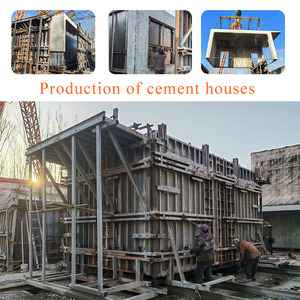
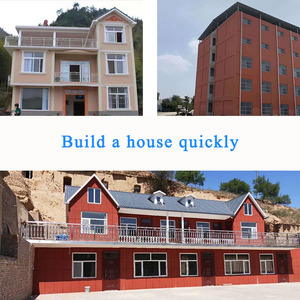







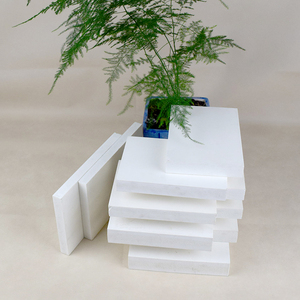



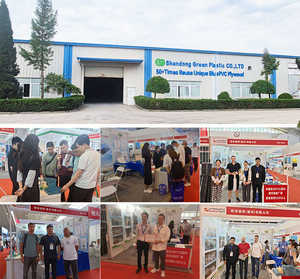
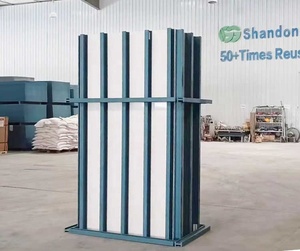
Wood concrete forms, also known as concrete formwork, are temporary structures that support concrete during curing. They are constructed using wood and are designed to shape and hold concrete until it hardens into the desired shape. Wood concrete forms are widely used in construction projects due to their cost-effectiveness and flexibility in design.
Wood concrete forms come in different types, including the following:
Traditional Wood Forms
These are the most common forms of concrete. They are constructed using plywood, dimensional lumber, and wooden beams. Traditional wood forms are popular due to their flexibility and ability to be customized to different shapes and sizes. They are also cost-effective since the materials used are readily available. Additionally, these forms can be reused for different concrete projects, making them economical for large-scale construction.
Engineered Wood Forms
Engineered wood forms are constructed using engineered wood products, including oriented strand board (OSB) and plywood. These forms are designed to provide superior strength and durability compared to traditional forms. They are lightweight and easy to handle and offer a smooth concrete finish, thus reducing the need for additional treatments.
Panelized Wood Forms
These forms consist of pre-constructed panels that can be quickly assembled on-site. The panels are usually made of plywood and are reinforced with wooden beams. The forms provide consistent concrete walls and reduce labor costs since they are easy to assemble and disassemble. Moreover, they are suitable for large-scale construction projects that require a high volume of concrete.
Stay-in-place Wood Forms
These forms are constructed using wood and are designed to remain in place after the concrete has cured. They are ideal for projects where the time and cost of removing traditional forms are not feasible. Additionally, they provide insulation, thus improving the energy efficiency of the resulting concrete structure. These forms also enhance the aesthetic appeal of the concrete structure since they provide a textured finish.
Timber Frame Forms
Timber frame forms are constructed using a timber frame filled with plywood sheathing. They are durable and can withstand the high pressure of concrete. Additionally, they are suitable for creating thick concrete walls. The forms are also easy to repair and maintain, making them a cost-effective option for large construction projects.
Wood and Metal Combination Forms
These forms combine wood and metal, with wood used for the concrete contact surface and metal for the frame. They offer the durability of metal and the flexibility of wood. Additionally, they provide a smooth concrete finish and are suitable for projects requiring high-strength concrete walls. These forms also reduce the weight of the formwork, making them easy to handle during construction.
Concrete forms, whether wood or metal, are used in construction to create molds that hold wet concrete in place until it dries and hardens into the desired structure. Here are some features and functions of wood concrete forms:
Support and Shape
Wood concrete forms provide support to shape the concrete as it is poured and sets. The forms hold the liquid concrete in place, allowing it to harden into the desired shape and structure.
Adjustability
Wood forms can be adjusted for different sizes and shapes of concrete projects, including walls, foundations, slabs, and other structures. Wooden concrete forms are easily customizable and can be cut to size and shape to create forms for unique or complex concrete structures.
Cost-effective
Wood is usually more affordable than other form materials like metal. This can help keep costs down, especially on larger projects. It is a one-time use option, making it a cost-effective choice for small-scale projects or DIYers.
Easy to Handle and Assemble
Wood is lightweight, making it easy to handle, transport, and assemble on the job site. It is very easy to nail/screw together and can be easily fixed on-site if needed. This reduces labor time and costs.
Versatility
Wood can be used for various concrete applications, including flatwork, foundations, walls, columns, and more. It can create straight, curved, or angled forms depending on the construction needs.
Stability
Once wet concrete is poured, wood forms can remain stable and sturdy, ensuring the concrete sets evenly without shifting or sagging. This is especially important for taller forms that require bracing.
Smooth Finish
Wood can provide a smooth finish to the concrete surface, especially when using high-quality form-grade plywood. The smooth surface can reduce the need for additional finishing work once the concrete cures.
Drainage
Wood forms can allow for the drainage of excess water or concrete during the pouring process. Proper drainage can prevent form blowouts and ensure a successful concrete pour.
Wood concrete forms are used in various scenarios to mold and shape concrete structures. Here are some of their common usage scenarios:
Structural Elements:
Wood forms are used to create structural elements in buildings and infrastructure. For instance, concrete footings and foundations, concrete walls, columns and pillars, beams, slabs, and decks, parking garages, bridges, tunnels, and underpasses.
Flatwork:
This refers to horizontal concrete surfaces that are poured in place. Wood forms are used to shape and contain the following: Driveways, sidewalks, patios, floors, and surfaces in commercial, industrial, and residential settings.
Architectural Features:
Wood concrete forms create aesthetic and functional features. They include: Concrete walls with wood forms that look like stone, brick, or textures; decorative concrete elements; curbs, gutters, and drainage structures; concrete stairs and ramps; architectural walls and features.
Utility and Infrastructure Projects:
Wood forms are used for concrete utility structures like: Manholes, catch basins, and utility vaults; water management structures like retention and detention ponds, and curbs and gutters. They are also used for concrete formwork for bridges, tunnels, and other infrastructure projects.
Precast Concrete:
Wood forms create molds for precast concrete elements cast off-site, including; walls, panels, beams, columns, and architectural elements.
Specialized Forms:
These are custom-built wood forms for unique projects or specific design requirements. For instance, tapered forms for sloped surfaces and cantilevered forms for overhanging sections.
Temporary Structures:
Wood forms are frequently used to create temporary structures in construction sites, including shoring, bracing, scaffolding, and support structures.
Residential and Commercial Construction:
These forms are used in both residential and commercial construction to create foundations, walls, floors, and other structural elements.
When choosing wood concrete forms, it is essential to consider a few factors to ensure the project runs smoothly and the desired results are achieved. Here are some of them:
Consider the project requirements
The first thing to consider is the project requirements. Determine the shape and size of the concrete structure. If it is a simple structure, then wood concrete forms are ideal. However, for complex structures, engineered forms might be ideal. Also, consider the required concrete strength. Ensure that the wood forms are sturdy enough to withstand the pressure. Finally, consider the duration of the project. If it is a long-term project, then metal forms might be a better choice.
Examine the wood quality
The quality of the wood will directly influence the outcome of the project. Hence, it is important to choose wood that is straight, dry, and has a minimum knot. Select wood with a smooth finish to ensure a smooth concrete finish. Moreover, select wood that is durable and can be reused several times.
Determine the budget
Concrete wood forms are available at different price points. It is important to determine the budget to avoid overspending. Wood forms are more affordable than other forms, such as metal forms. They are a good choice for those on a tight budget. Additionally, consider the reuse potential. As stated earlier, some wood types can be reused several times. When these forms are reused, they help cut down labor costs and the overall cost of the next project.
Evaluate accessibility and logistics
It is important to evaluate accessibility and logistics before choosing a wood form for concrete. Some sites have limited access, making it difficult to transport large or heavy items. Therefore, if the site has limited access, it is better to choose wood concrete forms that are easy to handle and transport. Furthermore, consider the on-site labor skills. Some forms require specialized skills for installation and dismantling. If the site has no specialized personnel, choose wood concrete forms that can be easily installed.
Q: What are the benefits of using wood concrete forms over traditional methods?
A: Wood forms are more flexible and easier to work with. They allow for the creation of complex shapes and designs. Wood is also easily available, which makes it a cost-effective choice.
Q: What type of wood is used for concrete forms?
A: Plywood is the most commonly used wood for concrete forms. It is made from softwood species like pine, fir, or spruce. Other woods used include osb concrete forms, and dimensional lumber.
Q: How are concrete forms constructed?
A: The concrete forms are constructed by creating a frame using plywood and 2x4 or 2x6 wooden beams. The frame is then lined with plywood to hold the concrete.
Q: What are the disadvantages of using wood forms?
A: Wood forms have a high absorption rate. This means they can absorb a lot of water from the concrete mixture. As a result, they may require the use of release agents. Additionally, wood forms are not as durable as other forms. They can only be used for a limited number of pours.
Q: What are formwork wood strips?
A: Formwork wood strips are wooden beams used to create concrete forms. They provide the necessary support and structure for the forms. Formwork strips are also known as formwork battens or concrete form strips.